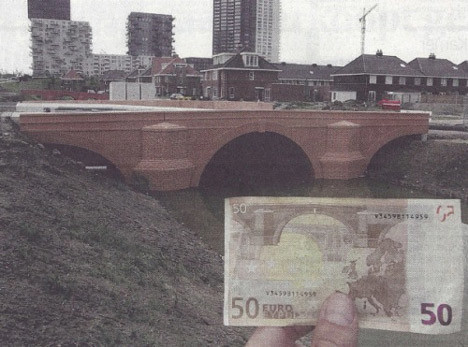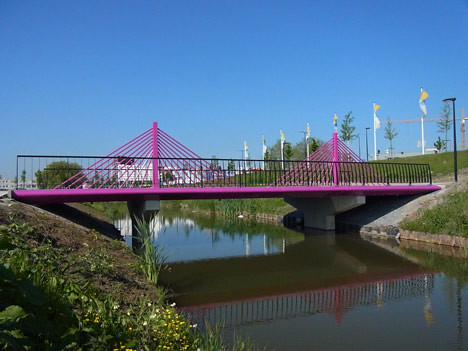
PREV ARTICLE
NEXT ARTICLE
FULL ISSUE
PREV FULL ISSUE
MORE ON FICTIONAL BRIDGES ON EURO BANKNOTESIn the September 8, 2013 E-Sylum we quoted an article from The Mirror on sexism on world banknotes: “Most countries have no women represented on their banknotes at all. Out of the 14 countries listed in the table below only 11 per cent of banknotes include an image of a woman. ... Some designs like the Euro don’t include people at all, depicting famous architecture instead." Gary Beals of Segovia, Spain writes: Ney ney, dear banknote aficionado — Euro banknotes have ZERO famous architecture on them — None at all. All images are imaginary sort-of-like someplace, but the competitive envy of the various nations caused Euro banknote developers to prohibit showing a specific, actual place in one country that would cause other nations to say, “hey – where is our monument?” Each of the coin-producing EU nations can feature whatever they want on the obverse of their coins, but the centrally produced banknotes follow different rules. This submitted by an old numismatist but new member who is working his way back in time through the issues. No corrective comment later on this was spotted. This fact may have been noted, but I submit this having not seen anyone else correct that comment in the last two years.
I don't believe we've addressed that article's statement specifically, although another E-Sylum article did touch on
the faux architecture aspect - in 2012. Here's are some excerpts from that article - I've reordered the text to tell the story
chronologically. -Editor
The bridges were designed by Robert Kalina, an employee of the National Bank of Austria in the mid-'90s, as a tribute to European engineering. Kalina's bridges beat out more than 40 other designs in 1996 because, among other factors, they were totally uncontroversial. Each euro note's bridge represents a different European architectural epoch: classical, Romanesque, Gothic, Renaissance, Baroque and Rococo, industrial, and 20th century modern. The higher the denomination, the more recent the style. In the fall of 2009, Robin Stam was waiting to pay for his dinner at Angelo Betti, a busy pizzeria close to his house in Rotterdam. Sitting at his table, he noticed for the first time the series of small bridges that appeared on the back of his euro notes. A young graphic designer with a jagged mop of brown hair, Stam began to research how the drawings ended up on the back of the euro. When Stam, who has a rebellious streak, learned that the structures didn't exist, he decided to change that. He would build the bridges for the first time in his hometown, the humdrum Rotterdam suburb of Spijkenisse. Stam set to work bringing the bridges, those woebegone symbols of European cooperation, to life. "I thought it was funny that me, just a regular designer, could take something that big and just claim it," says Stam, who is 30. His plan was to build the bridges exactly as they appear on the back of the bills, down to the pastel colors, which would enliven his drab portside suburb. Partly for a laugh, Stam mentioned the idea of building the bank-note bridges to Spijkenisse Alderman Gert-Jan't Hart, who manages new construction projects on the city council. "I thought that was a brilliant idea," Hart says. "Every European citizen and every member of the European community who has the biljet in their hands will have a link to Spijkenisse." The town happened to be in need of a set of bridges to support car, bicycle, and pedestrian traffic over a creek surrounding a new middle-class housing development, Het Land (the Countryside). "We already reserved the money in our budget for six bridges," Hart says. Because the development needs six and not seven bridges, two of the seven bank-note bridges, the €5 classical and €20 Gothic bridges, are being built as a split-personality 20-meter-wide dam.
Coincidentally, Katie de Silva recently sent in a 2013 article with images of the completed bridges. So the 2013 sexism article
wasn't completely wrong after all - the depicted bridges actually do exist, they just aren't famous (yet). Here are some of the
images - be sure to read the complete article. -Editor

10 Euro Bridge 
50 Euro Bridge 
500 Euro Bridge
Thanks, everyone. Delightful topic. Do we have any readers who have seen these bridges in person? Since they cross a creek rather than a
river, these must be small-scale versions of the classic bridges they represent. So I wonder if the impression in person is more like the
Stonehenge set from the mockumentary "This is Spinal Tap". -Editor
To read the complete article, see:
To read the earlier E-Sylum articles, see:
Wayne Homren, Editor The Numismatic Bibliomania Society is a non-profit organization promoting numismatic literature. See our web site at coinbooks.org. To submit items for publication in The E-Sylum, write to the Editor at this address: whomren@gmail.com To subscribe go to: https://my.binhost.com/lists/listinfo/esylum All Rights Reserved. NBS Home Page Contact the NBS webmaster 
|